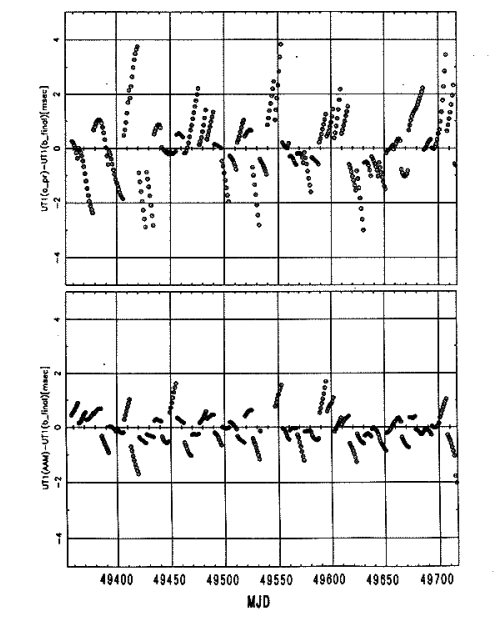
Figure 1. The error of the UT1 predicted by IERS Bulletin-A (a) above and that calculated from AAM data (b) bellow respectively (Comparison with IERS final value).
Crustal deformation monitoring network is under development in Tokyo metropolitan area by Communications Research Laboratory using VLBI and SLR techniques. The observation network consists of four stations which are connected by high speed data transmission network using ATM switchfor the real time VLBI. Precise Earth's rotation parameters, in particular UT1, are needed in time to determine the baseline vector. The simple method to predict UT1 from AAM (Atmospheric Angular Momentum) data was investigated and the precision of the predicted value was evaluated.
The error of the UT1 predicted by IERS and that calculated from AAM data are shown in Fig.1 (a) and Fig.1 (b) respectively. Predicted UT1 is compared with IERS Bulletin-B final value. The UT1 prediction derived from AAM data is twice better than that of IERS Bulletin-A. In this study, the oldest value in the latest cycle of IERS rapid data was used for the initial value of integration. We may have a possibility to improve the precision of prediction by introducing a more skillful method such as Kalman filter.
Recently AAM data are calculated by Japan Meteorological Agency
within 6 hours. Because the amount of AAM data is very small, it is
easy to introduce AAM data by FTP for quasi-real time analysis of KSP.
